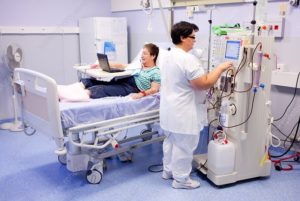 “Using an objective system that discriminates between aetiology and outcome allows a more complete, objective understanding of relative infection risks and outcomes for arteriovenous grafts (AVGs).” This is the conclusion of a review published online in The Journal of Vascular Access (JVA). Authors David Kingsmore (Queen Elizabeth University Hospital, Glasgow, UK) and colleagues suggest that such a system can inform discussions with patients requiring vascular access for haemodialysis.
“Using an objective system that discriminates between aetiology and outcome allows a more complete, objective understanding of relative infection risks and outcomes for arteriovenous grafts (AVGs).” This is the conclusion of a review published online in The Journal of Vascular Access (JVA). Authors David Kingsmore (Queen Elizabeth University Hospital, Glasgow, UK) and colleagues suggest that such a system can inform discussions with patients requiring vascular access for haemodialysis.
The authors summarise that AVG infection was not found to be common, that it was caused by a systemic infection in only one-third of patients, did not lead to metastatic infection, and, “importantly,” was treatable without loss of access in one-half of all cases.
“The perception that AVG infection is frequent and severe is not based on contemporary data from large units using modern AVG,” the authors begin. Furthermore, they write that older reports “compounded misperceptions” by using non-standardised reporting that prevents easy comparison against the alternative modalities.
In their review, Kingsmore et al used a recently-published reporting scheme to analyse the frequency, management, and outcome of AVG infection in a large series of sequential early-cannulation AVGs with long-term follow-up. The aim was to assess the application and implications of a standardised reporting system for AVG infection.
The investigators performed a single-centre series analysis of 277 early-cannulation AVGs with a minimum of one-year follow-up. They note that infections relating to the AVG were classified, root-cause analysed, and the outcomes presented.
Writing in JVA, Kingsmore and colleagues report that 16% of all AVGs implanted, representing 51 episodes, developed infection related to the AVG. However, they also relay that more detailed analysis shows that this can be broken down into the following results: primary AVG infection (related to the insertion procedure or within 28 days) occurred in only 3% of AVGs assessed, or nine times; secondary AVG infection (related to AVG in use) occurred 33 times (rate 0.27/1,000) haemodialysis days), at a mean of 382 days; and tertiary AVG infection (in AVG no longer in use) occurred nine times. Finally, they add that only one-third of all AVG infections led to bacteraemia, and that one-half did not lead to loss of functional access.










